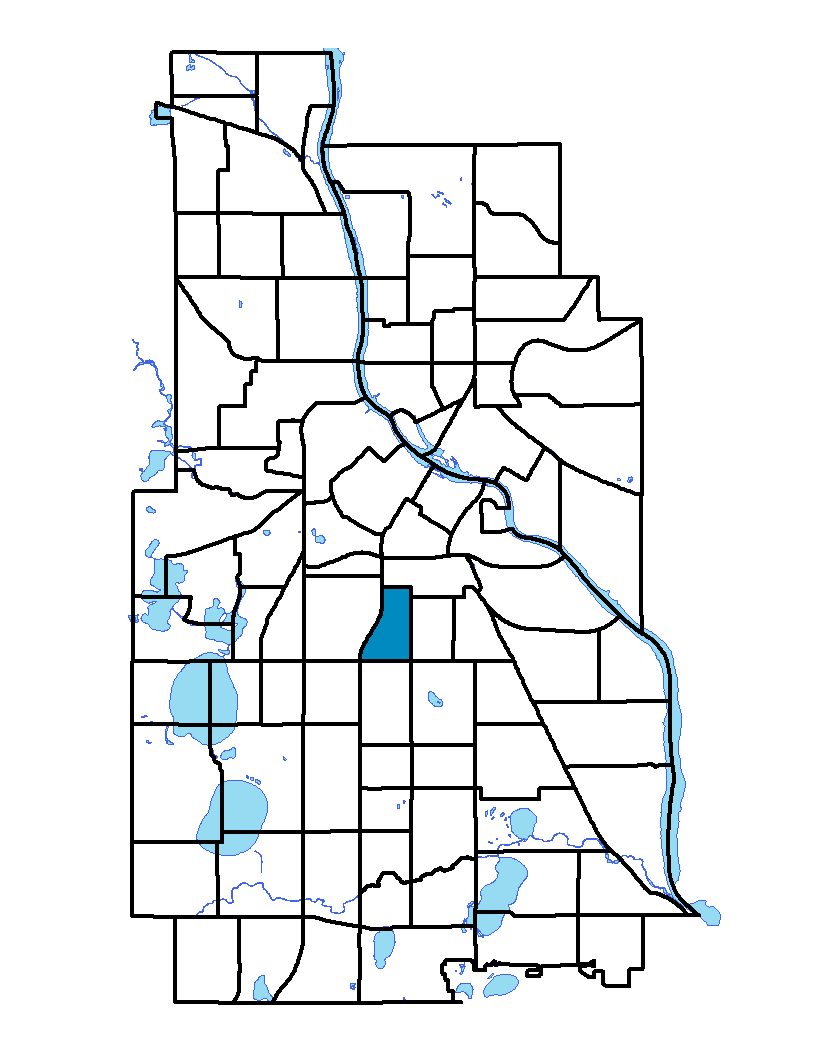"Compare Neighbordhoods" feature is not available in the archived version.
Phillips West
On April 29, 2005, the City Council approved establishing Phillips West. Phillips West occupies the western part of the former Phillips neighborhood, delineated by Chicago Avenue and 22nd Street. Phillips is a diverse area in many ways: its population includes people of many nationalities; it has a mix of residential, commercial and industrial uses; and it is home to several large employers. The neighborhood and its junior high school take their names from Wendell Phillips, a 19 th century abolitionist.
To learn more about the neighborhood association visit: www.phillipswest.info
Indicator Details
| Indicators | Primary Domain | Indicator Value |
Rank |
Tier |
|---|---|---|---|---|
| Reading Proficiency | Educational Opportunities | -% | - | Data N/A |
| Chronic School Absence | Health Systems and Public Safety | -% | - | Data N/A |
| High School Graduation Rate | Educational Opportunities | -% | - | Data N/A |
| Access to Mainstream Financial Services | Economic Health | -% | - | Data N/A |
| School Readiness Scores | Educational Opportunities | -% | - | Data N/A |
| Preventable Hospitalizations | Health Systems and Public Safety | - | - | Data N/A |
| School Proximity to Traffic | Environmental Hazards | 0.0% | 1 | Top |
| Business Retention | Economic Health | 96.4% | 1 | Top |
| Offsite Alcohol Outlets | Neighborhood Characteristics | 1 | 6 | Top |
| Commute Mode Share | Transportation | 51.5% | 6 | Top |
| Household Transportation Costs | Transportation | 13.9% | 12 | Top |
| Walkability | Neighborhood Characteristics | 81 | 14 | Top |
| Transit Accessibility | Transportation | 463 | 21 | Top |
| Age of Housing | Housing | 77.7% | 26 | Top |
| Low Birth Weight | Health Systems and Public Safety | 6.0% | 30 | Middle |
| Vacancy Rates | Housing | 5.9% | 31 | Middle |
| Food Desert | Neighborhood Characteristics | 100.0% | 31 | Middle |
| Violent Crime | Health Systems and Public Safety | 48 | 47 | Middle |
| Tree Cover | Natural Areas | 28.0% | 48 | Middle |
| Blood Lead Levels in Children | Housing | 4.9% | 51 | Middle |
| Voter Participation | Social Cohesion | 21.3% | 55 | Middle |
| Local Business Vitality | Economic Health | 50.2% | 58 | Middle |
| Residential Mobility | Social Cohesion | 71.5% | 64 | Bottom |
| Pedestrian Connectivity | Transportation | 104.9 | 65 | Bottom |
| Toxic Releases from Facilities | Environmental Hazards | 56.6% | 66 | Bottom |
| Proximity to Brownfield Sites | Environmental Hazards | 18.9% | 69 | Bottom |
| Excessive Housing Cost Burden | Housing | 42.6% | 69 | Bottom |
| Long-Term Unemployment | Employment Opportunities | 8.7% | 71 | Bottom |
| Preschool Enrollment | Educational Opportunities | 24.2% | 73 | Bottom |
| Motor Vehicle Collisions | Health Systems and Public Safety | 31.1 | 74 | Bottom |
| Residential Proximity to Traffic | Environmental Hazards | 49.1% | 82 | Bottom |
| Adult Educational Attainment | Educational Opportunities | 65.7% | 82 | Bottom |
| Proximity to Superfund Sites | Environmental Hazards | 90.6% | 83 | Bottom |
| Access to Parks and Open Space | Natural Areas | 0.0% | 84 | Bottom |
| Employment Rate | Employment Opportunities | 42.4% | 84 | Bottom |
| Public Assisted Households | Employment Opportunities | 83.4% | 85 | Bottom |
| Travel Time to Work | Employment Opportunities | 26.1 minutes | 85 | Bottom |

